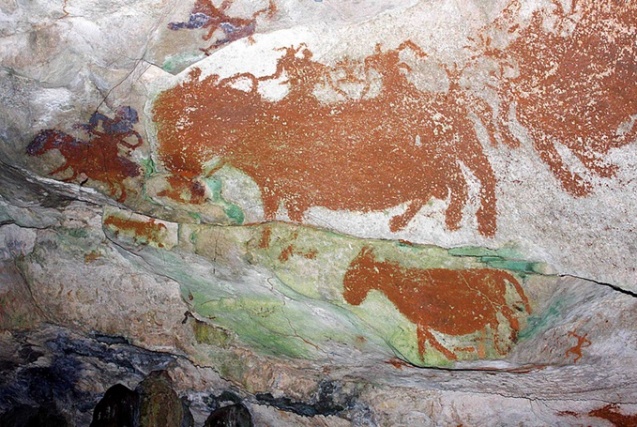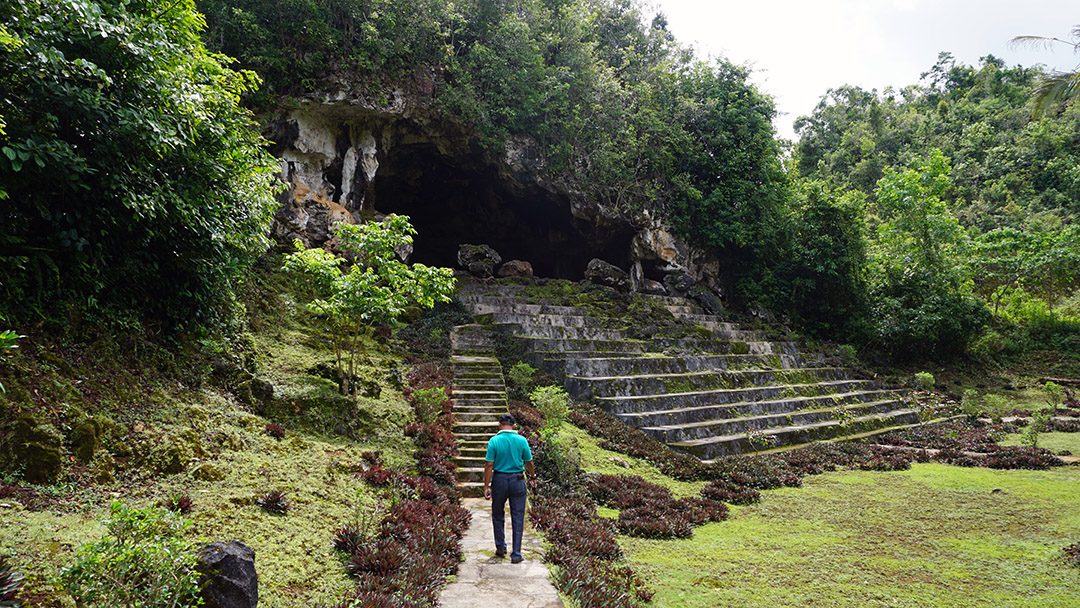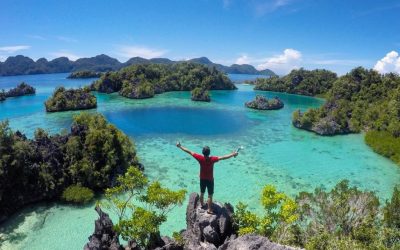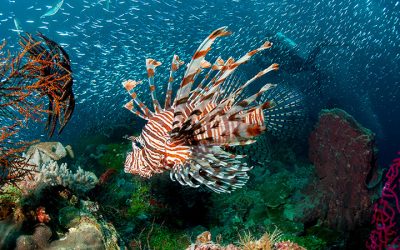Cultural Destination
Kobori Cave
Kobori Cave (Photo: @Indonesia Tourism)
Kobori Cave
A little bit of history is always needed to understand the place you are visiting. The Kobori Cave represents a concrete testimony of the ancient Muna Tribe in Megalithic era (around 4000 BC). This Indonesian National Heritage Site is also known as the “the cave of ink” for the fact that visitors who enjoy an excursion here, can witness some very old paintings which describes the way of life of this tribe. There are 565 megalithic paintings spread in several karst cave across Muna island, Southeast Sulawesi. Come and discover this wonderful place!
Cultural Tourism Destination
Kobori Cave
Tourist Attractions in Southeast Sulawesi
Labengki Island – Giant Clam Marine Reserve
No one knows that the second biggest Kima giant clam (Tridacna gigas) with the size of 50 cm can be found in
Bajo Coastal Village in Bokori Island
Located not far from Kendari City, this small island with white sand is a-must-visit in
Wakatobi UNESCO Biosphere Marine Reserve
Known as marine paradise, Wakatobi was designated as UNESCO marine biosphere in
Southeast Sulawesi
Batik Motifs
Wakatobi
It symbolizes the coastal beauty of the Wakatobi island and the symbol of Patra symbolizes
Pati-Pati Pinehiku
It symbolizes the hierarchy in society and the social status of the Mekongga
Ake Patra
Ake is related to the divinity and the composition of the universe. It is a symbol of
Discover
Indonesian
Batik
Motifs
Insang Ikan
Insang refers to the gills of the fish. This is a typical pattern of Malay ethnic who inhabits
Bultiya
The word ‘Bultiya’ is an acronym of the three major tribes in North Kalimantan, namely
Gedhog Kembang Waluh
a combination of Javanese cultural motif of the Majapahit kingdom (XII-XIV century) with
Wakatobi
It symbolizes the coastal beauty of the Wakatobi island and the symbol of Patra symbolizes
Leuit Sijimat
This motif reflects the daily activities of the Baduy tribe in Banten. The main ornaments of batik motif consist of:
Tenun Bima
The motifs are adopted from Bima woven textile. This pattern has received a great
Sido Mulyo
Sidomulyo is one of the classical motifs, which is specifically used for the bride’s costume in
Kaharingan
The Kaharingan or ‘tree of life’ based on the Dayak tribes’ belief system. This tree symbolizes
Durian Pecah
Broken Durian motifs depict the foundation of faith. The second half signifies the mastery of
Angsa Duo
According to legend, the Angso duo batik motif is a pair of swans that are believed to have led Princess
Dayak Taghol
Dayak Taghol has a distinctive style of four curved lines and small dots. This motif represents
Merak Ngeram
The hatching peacock motif has a very deep meaning which refers to the sacrifice and
Gurdo Solo
Gurdo or garuda bird is the mount of the Indian god Vishnu. As the Sun Bird,
Malinau Cultural Festival
You will witness a unique competition that might not be found other than in
Ikan tambal
The word “Ikan” refers to fish. The philosophical meaning of Ikan Tambal means is
Daun Lada Hitam
The black pepper motif represents the main commodity of Bangka Belitung
Burung Bidadari
Bidadari birds are endemic birds in Halmahera. This motif represents an
Honai
The Honai is inspired by the traditional house of the Papuan community living in
Tanah Liek
The word “Tanah Liek” refers to clay in Minang language. It is also known as
Manguni Minahasa
Manguni is identified as the symbol of the Minahasa people. Manguni is known as a
Desa Na Tolu
The Desa Na Tolu characteristic pattern symbolizes the Batak philosophy of existence and
Sandeq
Sandeq Boat is a symbol of the maritime importance of the West Sulawesi region. The greatness of
Hiu Taliyasan
Indonesia is also home to the world’s largest fish, the whale shark (Rhincodon typus). Hiu Taliyasan refers to
Parang Seling
Parang Seling or “alternating daggers” is a royal batik motif. It is a feminine variant of
Kuda Kupang
Horses symbolize wealth. It contains noble values of virtuous characters that bring
Sero Tangga
The Sero Tangga illustrates an endearing feeling and sacrifices of a person to fulfil
Kerawang Tegak Aceh
The Vertical Upright (Kerawang Tegak) Motif symbolizes a person who has a strong
Karawo Mahkuta
Mahkuta refers to Gorontalo’s traditional crown. It represents noble characters of
Karawo Pinang
Pinang refers to the Palm areca tree. This motif is considered as the original
Pati-Pati Pinehiku
It symbolizes the hierarchy in society and the social status of the Mekongga
Bomba Mawar
This motif means sacred love for family, kingdom, and God; It also illustrates
Sekar Jati
Sekar means flower and Jati refers to teak trees that symbolizes a strong mental character that
Salakanagara
Salakanagara batik motif illustrates the first kingdom in the Betawi land
Taiganja
Taiganja is a precious gold pendant that shows the social status of the Kaili family. It is
La Galigo
La Galigo is a literary work of the Buginese Epic that has 300 thousand epic lines. It is considered even
Jupri Kembang Teh
Kembang Teh illustrates the tendrils of tea plants that grow in the highlands of
Srimanganti
The name of the Srimanganti motif is derived from Palace’s hallway that connects to
Jumputan Bintang
The word Jumputan means the tie-dye technique, while the word “Bintang” refers to
Besurek Rafflesia
The term “Basurek” refers to a textile that contains letters or inscriptions
Tifa Totobuang
The batik motifs illustrate Maluku’s traditional music instrument called
Besurek Rembulan
This batik illustrates praise for God who created the wonderful universe
Gorga Simeol-Meol
The Gorga Simeol-meol is a pattern of plant tendrils. it is regarded as a symbol of longevity and
Kasih Tak Sampai
‘Kasih Tak Sampai’ is an idiom in the Indonesian language which refers to
Keluak Daun Pakis
The word “Keluak” is a Minang language which means twisted or tangled. The Motif of
Wirasat
Wirasat or divine inspiration is a gift from God. This inspiration is symbolized by
Dayak Kamang
Kamang motif is generally found in the Dayak tribe shield because it is believed to
Sekomandi
Its philosophical meaning is the eternal union which refers to a saying “until death do us part”
Gentala Arasy
Built as high as 80 meters, the tower also highlights the historical side of
Lontara
The Lontara script itself is a typical ancient script of Bugis and Makassar communities. History records that
Rumah Mamuju
the Batik motif illustrates the house of Mamuju King with the stairs, located on the left of the wooden stage house
Gajah Way Kambas
The motif illustrates the Lampung’s natural reserve, the Way Kambas. it also symbolizes
Bintik Tujuh
The Bintik Tujuh (Seven Dots) motif has 7 white spots and green color gradation as
Gamolan
This motif illustrates Gamolan, a bamboo musical instrument of Lampung that is
Bekantan Pakis
This motif represents Pakis Haji (Polystichum setiferum), an endemic plant in
Kaganga Tanah Rejang
If Batik Besurek combines Arabic calligraphy motifs, then the Kaganga batik takes
Gigi Haruan Lidi
The Gigi Haruan Lidi motif is taken from the name of the cork fish and is a symbol of
Bale Lumbu
This motif signifies the welfare of the ancient Sasak society. Bale also symbolizes the
Pattimura
Pattimura is the name of an Indonesian hero who fought against colonialism in
Ukir Sentani
The Ukir motif is a batik motif that is inspired by various traditional Sentani wood carvings
Kawung
The Kawung motif was created by Sultan Agung Hanyokrokusumo (1593 – 1645) as a symbolic gift for
Lipaq Sabe
Lipaq Saqbe contains a simple geometric classical motif with various flower decorations. This textile is
Raja Ampat
Raja Ampat motif represents the marine life at Raja Ampat archipelago in
Pohon Hayat (Tree of Life)
The Batik motifs in Lampung are dominated by the acculturation of Buddhist and
Tongkonan
Toraja’s traditional house is called Tongkonan. Tongkonan is a place for
Tampuk Manggis Sasirangan
The motif illustrates the philosophy of the mangosteen fruit, which is
Ake Patra
Ake is related to the divinity and the composition of the universe. It is a symbol of
Tengkawang Ampiek
With its many advantages, the Dayaks use this leaf in ritual ceremonies. This plant is a symbol of
Tabir Tanjung
Tanjung flower is a type of Cherry tree flower, which is commonly found in
Cengkeh
The clove flower motif is the main commodity of the Tolitoli Regency. This motif represents
Daun Sirih
This motif illustrates betel leaves that are used by Lombok communities as traditional
Singayaksa
The Singayaksa motif comes from the name of a place where Sultan Hasanuddin used to





